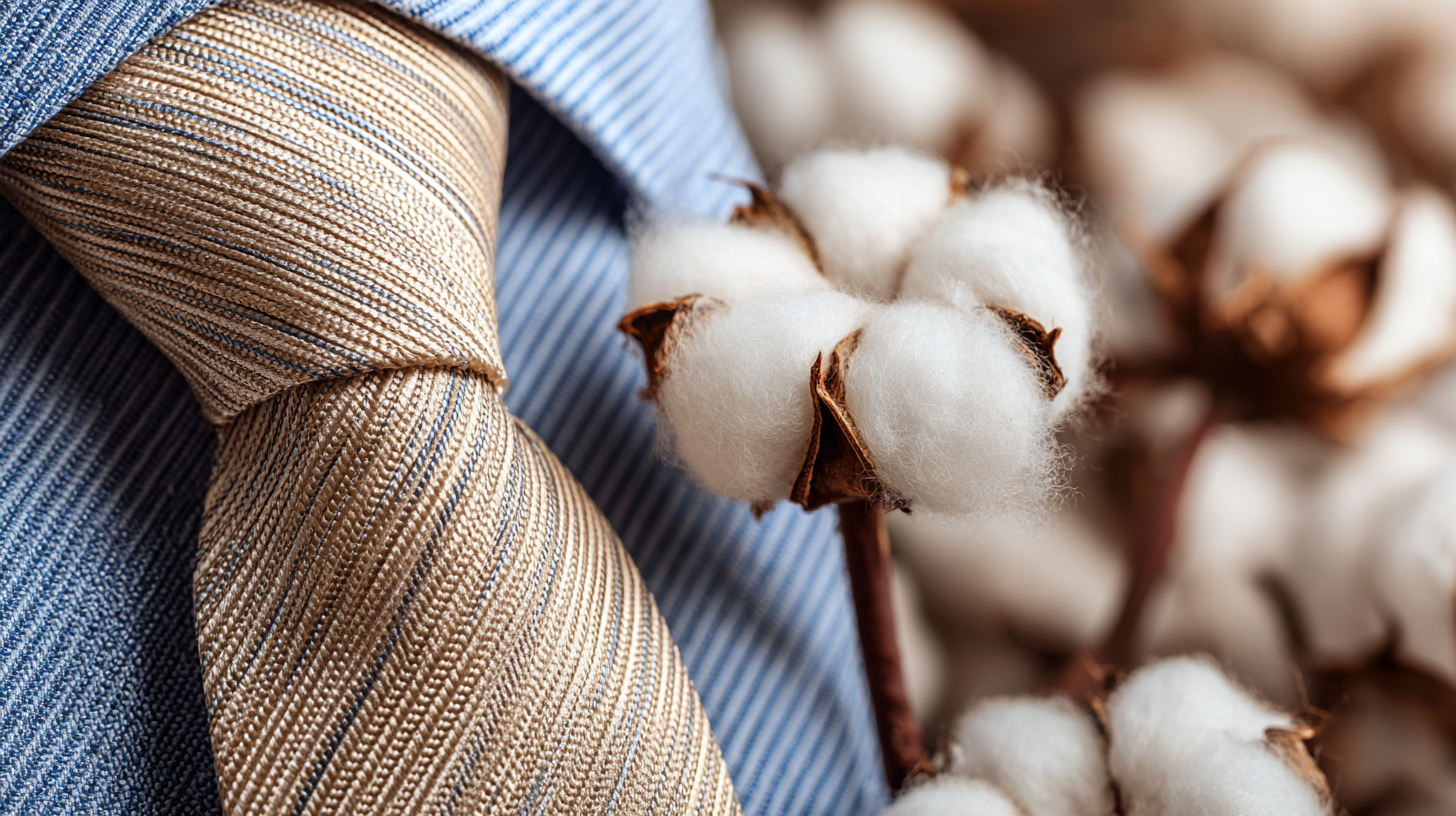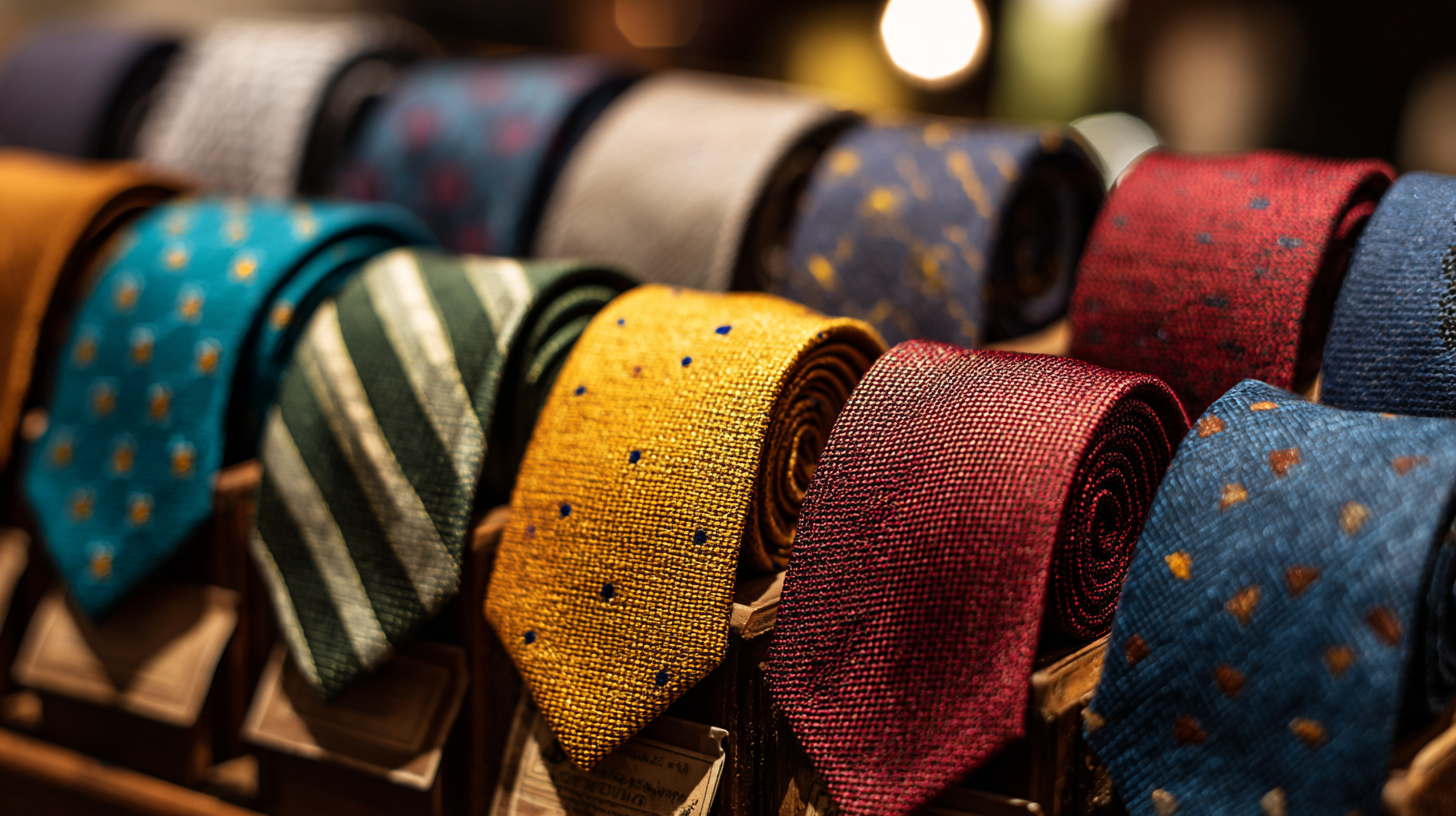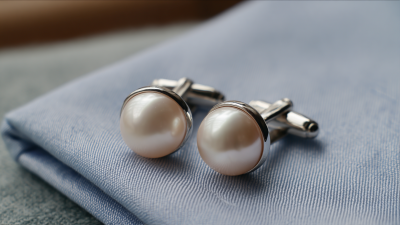Leave Your Message
As the fashion industry increasingly prioritizes sustainability, the cotton tie has emerged as a standout accessory in eco-friendly wardrobes. In 2023, the global market for sustainable fashion is projected to reach a staggering $8.25 billion, with a significant shift towards natural materials. According to a report by McKinsey & Company, 67% of consumers consider sustainability when making a purchase, and cotton ties are capturing this growing demand for eco-conscious choices. Cotton, known for its biodegradability and lower environmental impact compared to synthetic fabrics, is becoming a staple in sustainable fashion lines. With statistics indicating that organic cotton production has doubled over the past decade, the cotton tie not only offers a stylish touch to any outfit but also aligns with the principles of responsible consumption. This article will explore the sustainability of cotton ties and provide tips on how to incorporate them into your wardrobe, reflecting a commitment to both style and the planet.

In the evolving landscape of sustainable fashion, cotton ties emerge as a significant player, offering both style and eco-friendliness. According to a 2023 report by the Global Sustainability Initiative, the fashion industry is witnessing a shift towards sustainable materials, with 75% of consumers prioritizing eco-conscious choices. Cotton, a biodegradable and renewable resource, stands out as an excellent alternative to traditional synthetic materials, contributing to a reduced carbon footprint. Notably, organic cotton farming uses 91% less water compared to conventional methods, underscoring its environmental advantages.
Furthermore, the demand for sustainable accessories is on the rise, with the sustainable fashion market projected to reach $8.25 billion by 2025, driven by growing consumer awareness and preference for products that align with ethical practices. Cotton ties, often produced using less harmful dyes and processes, are increasingly being embraced as versatile, eco-friendly accessories that complement both formal and casual attire. By choosing cotton ties, consumers not only elevate their style but also support a movement towards a more sustainable fashion ecosystem.
| Statistic | Value |
|---|---|
| Percentage of Consumers Preferring Eco-Friendly Ties | 68% |
| Increase in Cotton Tie Sales (2023) | 25% |
| Percentage of Cotton Ties Made from Organic Cotton | 45% |
| Average Lifespan of a Cotton Tie | 10 years |
| Carbon Footprint Reduction Compared to Synthetic Ties | 30% |
| Growth of Brands Offering Sustainable Ties | 40% |
| Consumer Awareness of Sustainable Fashion | 72% |
The sustainability of cotton production has garnered increased attention in 2023, with a growing emphasis on eco-friendly practices in the fashion industry. One key study indicates that organic cotton is gaining traction, accounting for approximately 1.5 million tons of the global cotton supply. This represents a 10% increase from the previous year, driven by rising consumer demand for sustainable products. The global organic cotton market is projected to reach $10 billion by 2025, highlighting a significant shift in purchasing behavior among environmentally-conscious consumers.
Additionally, sustainable practices in cotton production involve minimizing pesticide use and optimizing water management. A report from the Textile Exchange revealed that farms utilizing regenerative practices can reduce water usage by up to 40% compared to conventional cotton farming. Moreover, the adoption of integrated pest management strategies not only lowers the environmental impact but also enhances biodiversity. These practices illustrate a burgeoning commitment within the textile industry to prioritize sustainability, reflecting a broader trend toward responsible fashion that eco-friendly clothing options like cotton ties can capitalize on.
The rise of sustainable fashion choices is reshaping consumer preferences and driving significant market growth in various segments. With the global fashion market projected to reach $8,670.7 billion by 2025 and an anticipated growth to $16,421 billion by 2033, the trend toward eco-friendly products is becoming increasingly prominent. More specifically, the demand for sustainable materials such as cashmere and linen is expected to grow, with the cashmere apparel market projected to increase from $3.63 billion in 2025 to $4.86 billion by 2032, reflecting a compound annual growth rate of 4.29%.
Additionally, consumers are gravitating toward brands that prioritize environmental, social, and governance (ESG) standards. A striking 89% of consumers have shifted their purchasing habits towards sustainable products, underscoring the necessity for brands to align with ecological and ethical considerations. This momentum suggests that the fashion industry is at a pivotal point, where commitment to sustainability is not merely a marketing tactic but a critical factor influencing consumer choices. As the sector adapts to these changes, innovations in sustainable materials and practices are set to lead the way forward in eco-friendly fashion.
 Cotton ties are increasingly emerging as a sustainable fashion choice, aligning with the growing trend toward eco-friendly apparel in 2023. According to a report from the Fashion Sustainability Initiative, the demand for organic cotton has surged by 18% over the past year, highlighting consumers’ preference for environmentally responsible options. Cotton's biodegradability and lower carbon footprint compared to synthetic alternatives make it an attractive choice for conscientious consumers. In fact, cotton production uses approximately 46% less energy than polyester, reinforcing its position as a sustainable choice in men's accessories.
Cotton ties are increasingly emerging as a sustainable fashion choice, aligning with the growing trend toward eco-friendly apparel in 2023. According to a report from the Fashion Sustainability Initiative, the demand for organic cotton has surged by 18% over the past year, highlighting consumers’ preference for environmentally responsible options. Cotton's biodegradability and lower carbon footprint compared to synthetic alternatives make it an attractive choice for conscientious consumers. In fact, cotton production uses approximately 46% less energy than polyester, reinforcing its position as a sustainable choice in men's accessories.
The environmental impact of cotton ties extends beyond their materials; they also support sustainable agricultural practices. Reports indicate that organic cotton farming can reduce water usage by up to 90% and eliminate harmful pesticides, promoting healthier ecosystems. This shift not only enhances the ecological credibility of cotton products but also appeals to the increasing number of consumers prioritizing ethical sourcing. With these impressive statistics, it's clear that cotton ties are not merely a stylish accessory; they represent a growing commitment to sustainable fashion in 2023.
As eco-conscious fashion trends continue to rise, cotton accessories have become a staple for many consumers looking to make sustainable choices. According to the Global Organic Textile Standard (GOTS), organic cotton cultivation uses up to 91% less water than conventional methods, a crucial statistic as water scarcity becomes an increasing concern in the fashion industry. This eco-friendly option not only reduces the environmental footprint but also promotes healthier farming practices.
When choosing cotton accessories for your wardrobe, it's essential to consider both the sourcing and production of the materials. Look for certifications like GOTS or OEKO-TEX, which ensure that the cotton is grown sustainably and processed free from harmful chemicals. Opting for brands that prioritize ethical labor practices is equally important, as the industry faces scrutiny regarding workers' rights.
Tips for Choosing Eco-Conscious Cotton Accessories:







